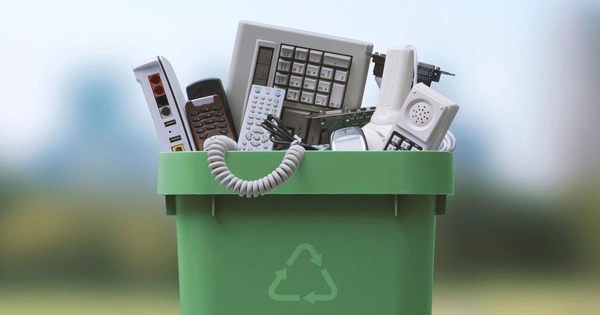Electronic waste, also known as e-waste, refers to discarded electrical or electronic devices. It is the term used to describe discarded electronic devices or equipment that have outlived their useful life. It is also referred to as waste electrical and electronic equipment (WEEE) or end-of-life electronics (EOL).
E-waste includes used electronics that are destined for refurbishment, reuse, resale, salvage recycling through material recovery, or disposal. Computers, laptops, smartphones, televisions, refrigerators, washing machines, and other consumer electronics fall into this category. Because of the rapid pace of technological advancement and the increasing consumption of electronic devices, e-waste is a significant and growing global problem.
Informal e-waste processing in developing countries can harm human health and pollute the environment. The growing consumption of electronic goods as a result of the digital revolution and scientific and technological innovations such as bitcoin has resulted in a global e-waste problem and hazard. The rapid exponential increase in e-waste is caused by frequent new model releases and unnecessary purchases of electrical and electronic equipment (EEE), short innovation cycles and low recycling rates, and a decrease in computer average life span.
Improper e-waste disposal and management pose significant environmental and health risks. Many electronic devices contain hazardous materials such as lead, mercury, cadmium, and brominated flame retardants, which when not handled properly can contaminate soil, water, and air. These toxic substances can harm both human health and the environment, causing pollution and long-term damage.
Lead, cadmium, beryllium, and brominated flame retardants are among the potentially hazardous materials found in electronic scrap components such as CPUs. Recycling and disposal of e-waste may pose a significant risk to workers’ and communities’ health.
There are several ways to address the issue of e-waste:
- Recycling: Proper recycling of e-waste is crucial to recover valuable materials and reduce the environmental impact. Recycling involves dismantling electronic devices, separating different components, and extracting materials like metals, plastics, and glass for reuse in the manufacturing of new products.
- Legislation and Regulations: Governments worldwide have implemented regulations and laws to manage e-waste effectively. These measures often include extended producer responsibility (EPR) programs, which hold manufacturers responsible for the entire life cycle of their products, including proper disposal and recycling.
- Awareness and Education: Raising awareness among the general public about the importance of responsible e-waste disposal is essential. Educating consumers about recycling options, refurbishing electronics, and the potential environmental and health risks associated with improper e-waste disposal can help encourage responsible behaviors.
- Donations and Refurbishment: Donating or refurbishing electronic devices that are still functional can extend their lifespan and reduce e-waste. Many organizations accept used electronics and either distribute them to those in need or refurbish them for resale.
- E-Waste Management Facilities: Establishing specialized e-waste management facilities equipped with appropriate technology and processes can ensure safe disposal, recycling, and proper treatment of hazardous components.
Efforts to tackle the e-waste problem require collaboration between governments, manufacturers, consumers, and the recycling industry. By adopting responsible e-waste management practices, we can minimize the environmental impact and health risks associated with electronic waste.
















